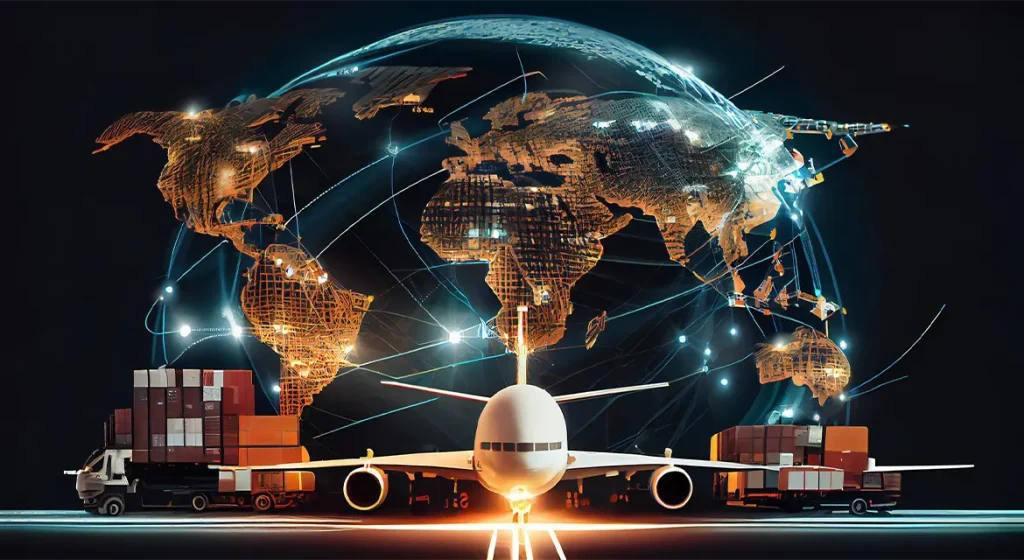Introduction to International Transportation Methods
International transportation refers to the movement of passengers or goods between two countries. These countries may be far apart or share land and maritime borders.
Various routes exist for exporting and importing goods, with each transportation method chosen based on factors such as conditions, costs, support, and the type of goods.
Jamboujet assists you in transporting purchased goods from all around the world, especially from China to Iran. Simply talk to our experts or place an order on the Jamboujet website.
International Transportation Methods:
Road Transport:
Road transport is often the best and safest method for international cargo transportation, minimizing vibrations and damage to the goods. In this method, goods are transported by trucks and trailers.
Maritime Transport:
When there is no land connection between two countries and only a maritime route is available, maritime transport becomes the best option. It is carried out by very large ships.
Air Transport:
Air transport becomes essential when time is crucial for exporting and importing goods. This method, carried out by airplanes, swiftly transports perishable and emergency goods.
Rail Transport:
Similar to road transport in many aspects, rail transport is the most cost-effective transportation route and is used between countries with shared rail borders.
Combined Transport:
In this method, multiple routes are used jointly. Depending on the destination and distance, it may not be possible to use a single route, so a combination of routes is employed. For example, rail and road transport can be used for transporting goods.
All of the above methods include purchasing from anywhere in the world, such as purchasing from Alibaba China or Chinese companies and factories.
Conditions for International Cargo Transportation:
Before utilizing this platform, you should be aware of the distance. Often, the cost of long distances is more economical than short distances. Sometimes goods need to pass through multiple points and countries, so the distance between points should also be considered.
The types of transportation vehicles vary greatly. Sometimes, depending on the type of goods and destination, you need to choose powerful and sturdy trucks. Other times, opting for regular but suitable vehicles for international transit will yield the best results.
Fuel and transportation costs and prices vary from country to country. If you seek help from reputable and experienced companies in international cargo transportation methods, they will provide you with the best and most cost-effective solution.
If you need fast transportation, especially from Europe to Iran, from the UAE to Iran, or transportation and clearance from China to Iran, rest assured that Jamboujet will assist you.
International Trade Terms and their Types:
International Commercial Terms (Incoterms) are a set of commercial phrases published by the International Chamber of Commerce regarding the commercial laws between countries and the reduction and elimination of ambiguities in various languages.
These terms, recognized by specific letters, are widely used in global transactions and trade.
Their adoption is encouraged by commercial representatives, lawyers, and international courts.
In other words, incorporating these items ensures transparency in transactions and mirror commitments.
Introduction to Various Types of International Cargo Transportation Methods in Export:
These methods are divided into four main categories:
Group C:
In this group, the goods are delivered to the buyer at the origin, and the freight is collected.
CFR (Cost and Freight): It includes the cost or value of the goods and the freight to the destination country and city. In this method, the transportation cost is borne by the seller, and the insurance cost is borne by the buyer, used in maritime transportation.
CIF (Cost, Insurance and Freight): Specific to maritime transport, it includes the value, insurance, and freight to the destination.
CPT (Carriage Paid To): It means delivering and paying the freight to the destination. It is usually used in combined transportation routes, but it also applies to land and air transport.
CIP (Carriage and Insurance Paid to): It means delivering and paying the freight and insurance to the destination, used in combined transportation routes.
Group D:
In this group, the goods are delivered to the destination.
DAF (Delivered At Frontier): Delivery at the border.
DES (Delivered Ex Ship): Delivery on the ship’s deck at the destination.
DEQ (Delivered Ex Quay): Delivery at the destination quay.
DDU (Delivered Duty Unpaid): Delivery without paying customs duties and taxes at the destination.
DDP (Delivered Duty Paid): Delivery with payment of customs duties and taxes at the destination.
Group E:
In this group, the goods are delivered at the origin or the point from which the goods are dispatched.
EXW (Ex Works): It means delivering the goods at the origin or workplace.
Group F:
In this group, the goods are delivered to the buyer without paying the transportation fee at the origin.
FCA (Free Carrier): In this method, the goods are delivered inside the truck, train, or airplane at the origin, and the transportation cost is borne by the buyer.
FAS (Free Alongside Ship): In this method, the goods are delivered at the origin port alongside the ship, and the transportation, insurance, and inspection costs are borne by the buyer.
FOB (Free On Board): In this method, when the goods pass the ship’s railing, the seller’s risk ends at the origin, and the goods are delivered on the ship’s deck. The transportation cost is borne by the buyer.
By utilizing the Incoterms rules and international cargo transportation methods, you can always benefit from the highest security, quality transportation, and global transit.






